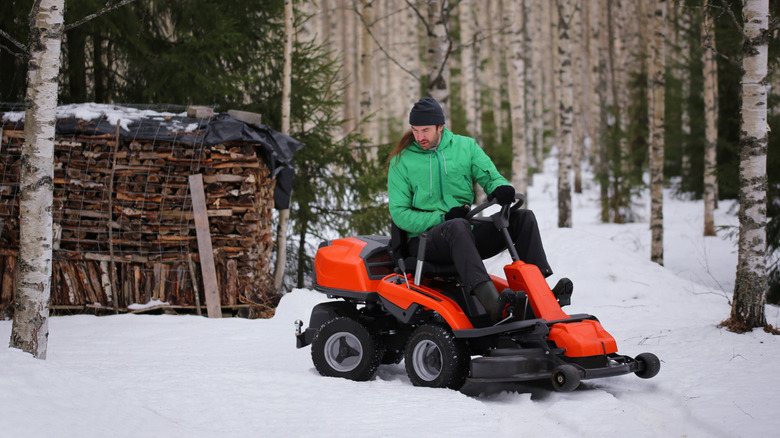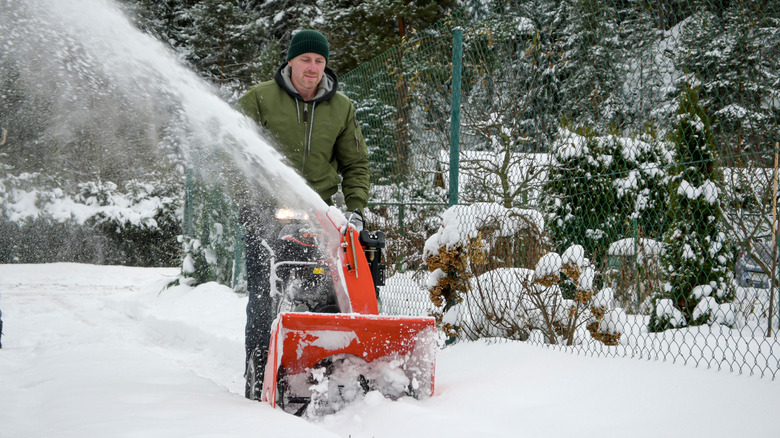Think Twice Before Using Your Riding Lawn Mower To Plow Snow This Winter
Turning your riding lawn mower into a snow plow seems like a logical choice. Instead of only using it in the summer, you can use it year-round. Plus, you get to sit instead of standing like you do when you shovel or snow blow your driveway and sidewalks. But don't ignore the possible drawbacks, which include shortening the life of your beloved lawn mower. A lawn mower plow attachment might not save you as much money as you think, and it could create more work for you.
Forcing your mower to do double duty could cause it to die prematurely. Estimates on how long a riding lawn mower might last usually average 500 to 700 hours with higher-end mowers lasting 1,000 hours or more. Normally, you use those hours during the late spring, summer, and early fall months. Plowing with your mower uses up the hours faster since you're also running the machine in the winter. How much you use it to plow depends on where you live and how snowy of a season it is, but you'll likely need to buy a new mower sooner even in milder climates.
Pushing heavy snow with a machine that's meant for cutting grass on even terrain could put more strain on the transmission. Additional wear on the machine could shorten its life even more. On top of that, exposure to extreme weather, including cold and moisture, could cause corrosion and damage to the components. That means you could be stuck with costly repairs.
Other reasons to use a snowblower instead
Instead of preparing your lawn mower for winter storage, you'll need to prepare it for plowing. First, you have to remove the blade deck and find a safe spot to store it. Adding chains to the back wheels and installing rear weights gives you traction since mower tires aren't made for driving in snowy, icy conditions. The plow attachment requires a mount bracket that you might have to install. Meanwhile, snowblowers are ready to go with some minimal maintenance.
While both tools remove snow, they do so differently. Snow blowers use an auger alone or an auger and an impeller together to pick up snow and blow it through the chute. Plows push or displace snow. Plows typically have a wider path to clear snow quickly, but it also makes it more difficult to maneuver in smaller areas. Because the plow is in front of the mower, you can't always see where it's going or what it's pushing, which creates more risk of you damaging your property or hitting something you want to avoid.
You could also face storage issues that may force you to reorganize your garage or storage shed. Lawn mower plows can be wide and cumbersome. Plus, they don't stand up on their own, so you need a safe, large spot to store them in the summer. Residential snow blowers are often compact and stand on their own, making them easier to tuck into a corner of your shed or garage when they're not in use.

